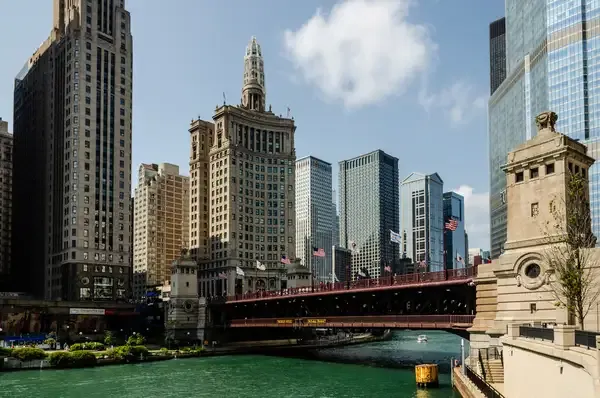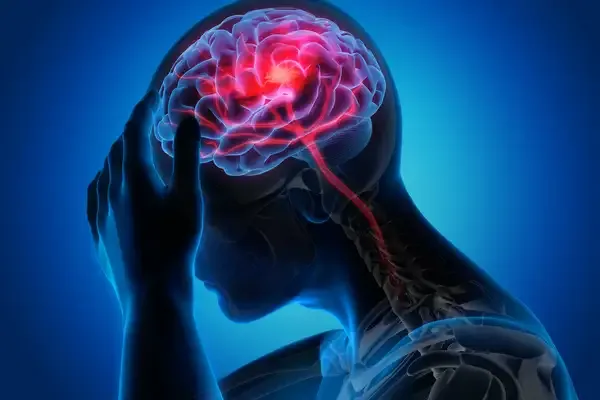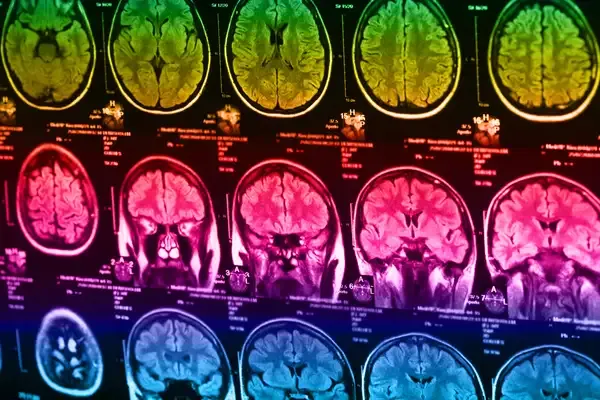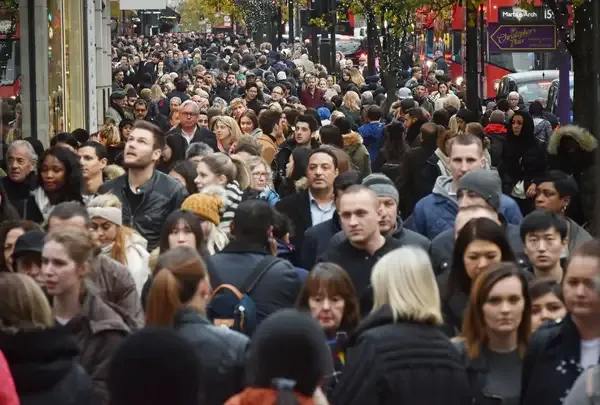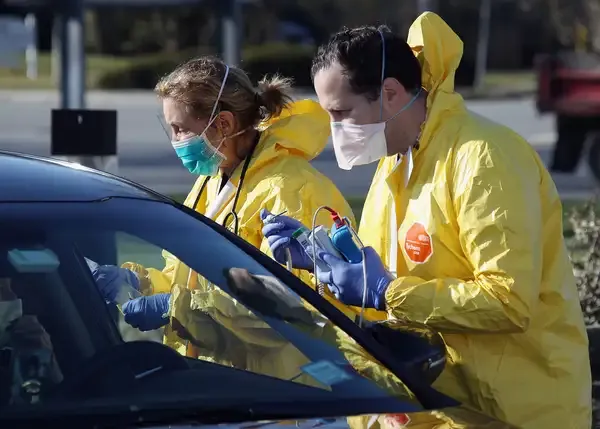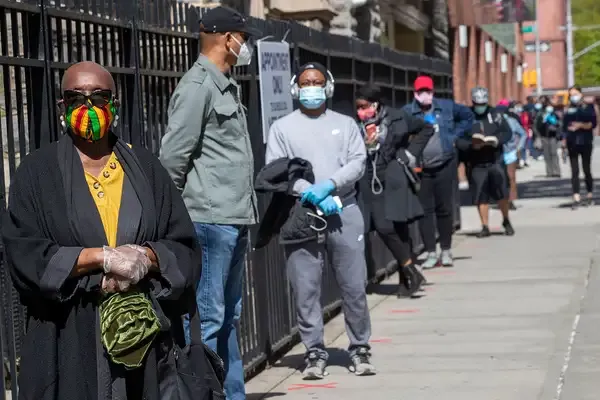Why Do Gray Hairs Have a Different Texture?
As people age, they often notice that their gray hair feels different from the rest of their strands. This change in texture can be attributed to several factors. Gray hair not only signifies a lack of pigmentation but also undergoes structural changes that affect its feel and appearance. The reason for these changes lies in the biology of hair and the natural aging process.
How Many People Actually Got Lobotomized?
The article explores the historical practice of lobotomies, revealing that tens of thousands of individuals underwent the procedure during its peak in the mid-20th century, primarily for mental health disorders. It also delves into the origins of nicknames for famous cities, including "The Big Apple" for New York City, which reflects its status as a cultural and economic hub. Other cities' nicknames are examined, highlighting their unique characteristics and histories that contributed to these enduring monikers.
How Does A Ventilator Work?
A ventilator is a medical device designed to assist or replace spontaneous breathing in patients with respiratory failure. It delivers a controlled flow of oxygen and removes carbon dioxide, helping to maintain adequate oxygen levels in the body. The process involves monitoring and adjusting airflow, pressure, and volume to meet individual needs. Meanwhile, the nickname "The Big Apple" for New York City symbolizes its status as a major cultural and financial hub, while other cities have unique nicknames that reflect their history, geography, or cultural significance.
What Are the Symptoms of a Stroke?
A stroke is a medical emergency characterized by the sudden onset of various symptoms, including weakness or numbness on one side of the body, difficulty speaking or understanding speech, blurred vision, and severe headaches. Recognizing these signs is crucial for prompt treatment. In a different context, cities like New York, known as "The Big Apple," have unique nicknames that reflect their history, culture, or characteristics. Other famous cities also boast intriguing origins for their names, adding to their allure and identity.
How Do the Symptoms of COVID-19 Differ from Those of Cold and Flu?
COVID-19 symptoms often differ from those of the common cold and flu, with distinctive signs like loss of taste or smell and a broader range of severity. Meanwhile, the nicknames of famous cities, like "The Big Apple" for New York City, often reflect cultural, historical, or geographical influences. Each nickname tells a unique story, shedding light on the identity and character of the city, from "Windy City" for Chicago to "The City of Angels" for Los Angeles.
What Is a Superspreader Event?
A superspreader event refers to a situation where a single individual infects a disproportionately large number of people, often during gatherings or crowded environments, leading to rapid disease transmission. In "The Big Apple," the term highlights New York City's vibrant culture and significant influence. Similarly, other famous cities have unique nicknames that reflect their history, characteristics, and cultural essence, creating a rich tapestry of identity for each location, from the Windy City to the City of Lights.
Questions About COVID-19 Answered
"Questions About COVID-19 Answered" provides clear and concise information on various aspects of the pandemic, addressing common concerns and misconceptions. In contrast, "The Big Apple" explores the origins of this iconic nickname for New York City, alongside the fascinating stories behind the monikers of eight other renowned cities. This juxtaposition highlights the significance of understanding both the challenges posed by global health crises and the cultural heritage embedded in the identities of major urban centers.
How Were Viruses Discovered?
The discovery of viruses began in the late 19th century when scientists observed that certain infectious diseases could pass through filters that blocked bacteria. This led to the identification of viruses as distinct pathogens. Meanwhile, the nickname "The Big Apple" for New York City originated in the 1920s, linked to horse racing and jazz culture. Other cities have similarly intriguing nicknames, often rooted in local history, culture, or notable features, reflecting the unique identities they embody.
How Do Vaccines Work?
Vaccines work by stimulating the immune system to recognize and fight specific pathogens, such as viruses or bacteria. They introduce a harmless component of the pathogen, prompting the body to produce antibodies and develop immunity. Meanwhile, cities like New York, known as "The Big Apple," have unique nicknames that often reflect their history, culture, or significant characteristics. Understanding these names offers insight into the identity and spirit of each city, highlighting their individual stories and significance.
Why Is Eating Protein Important?
Eating protein is essential for various bodily functions, as it plays a crucial role in building and repairing tissues, producing enzymes and hormones, and supporting immune health. Proteins are made up of amino acids, which are vital for muscle growth and overall maintenance of the body. Additionally, consuming adequate protein aids in satiety, helping with weight management. Understanding the importance of protein can lead to healthier dietary choices and improved overall well-being. "The Big Apple" is a nickname for New York City, symbolizing its status as a major cultural and economic hub. This moniker, popularized in the 1920s, reflects the city's vibrant atmosphere and significance in the arts, finance, and entertainment. Similarly, other cities have unique nicknames that capture their essence, such as "Windy City" for Chicago and "The City of Angels" for Los Angeles, each embodying distinct characteristics and cultural identities.
Who Can Declare a Pandemic and What Criteria Are Required for an Outbreak to Be Called a Pandemic?
The declaration of a pandemic is typically made by the World Health Organization, based on criteria that include the widespread transmission of a disease across multiple countries and continents, as well as its impact on public health. Meanwhile, the nicknames of cities often reflect their unique characteristics, historical events, or cultural significance. For instance, New York City is known as "The Big Apple" due to its vibrant arts scene and economic prominence, while other cities also have fascinating stories behind their monikers.
Do GM Foods Affect the Body Differently?
The exploration of whether genetically modified (GM) foods affect the body differently raises significant questions about health and nutrition. Scientific studies present a mix of opinions on the safety and impact of GM foods on human health. Meanwhile, "The Big Apple" and other famous city nicknames often have intriguing origins tied to culture, history, and local characteristics. Understanding these nicknames reveals the unique identities and stories behind iconic cities around the world, enriching our appreciation of urban life.
Is There a Cure for HIV Infection?
The search for a cure for HIV infection has made significant strides, yet no definitive solution exists. Advances in antiretroviral therapy have transformed HIV from a fatal disease to a manageable chronic condition. Meanwhile, the exploration of famous city nicknames reveals intriguing stories behind their origins. For instance, New York City is affectionately known as "The Big Apple," a moniker reflecting its vibrant culture and prominence in the jazz scene, alongside other cities with unique tales behind their names.
How Is BMI Calculated?
BMI, or Body Mass Index, is calculated by dividing a person's weight in kilograms by the square of their height in meters. This formula provides a simple numerical value to categorize individuals into weight classifications, aiding in health assessments. In contrast, the nickname "The Big Apple" for New York City is rooted in jazz culture and horse racing, while other famous cities have unique nicknames derived from historical, cultural, or geographical significance, reflecting their identities and characteristics.
How Is a Vaccine Approved for Use?
Vaccines undergo a rigorous approval process that includes preclinical research and multiple phases of clinical trials to assess their safety and efficacy. After thorough evaluations by regulatory authorities, successful vaccines receive approval for public use. In contrast, "The Big Apple" and other famous cities have unique nicknames rooted in history and culture. For instance, New York City's moniker reflects its vibrant jazz scene in the 1920s, while other cities derive their names from local landmarks, historical events, or distinctive characteristics.
What Are the Biological Effects of Marijuana Use?
Marijuana use has various biological effects, impacting both the brain and body. It can alter cognitive function, affect mood, and influence motor skills. The drug interacts with the endocannabinoid system, leading to changes in neurotransmitter release and potentially resulting in both therapeutic benefits and adverse effects. Meanwhile, the nicknames of famous cities, including "The Big Apple" for New York City, often reflect historical, cultural, or geographical significance, capturing the essence and identity of each location in a memorable way.
What Is a Second Wave of a Pandemic, and Could It Happen for COVID-19?
A second wave of a pandemic refers to a resurgence of infections after a decline, often occurring when restrictions are lifted or public behavior changes. For COVID-19, this could manifest through increased cases and hospitalizations, particularly if vaccination rates wane or new variants emerge. Meanwhile, the nicknames of cities like New York, famously known as "The Big Apple," often reflect their cultural, historical, or geographical significance. Other cities have similarly distinctive monikers that capture their essence and identity.
Why Does COVID-19 Disproportionately Affect African Americans, Hispanics, and Latinos?
The COVID-19 pandemic has highlighted significant health disparities, with African Americans, Hispanics, and Latinos facing higher infection and mortality rates. Factors such as socioeconomic inequalities, limited access to healthcare, and underlying health conditions contribute to this disproportionate impact. In a different context, the nicknames of cities often reflect their cultural, historical, or geographical significance. For example, New York City is famously called "The Big Apple," symbolizing its prominence in arts and commerce, while other cities also have unique origins for their monikers.
How Do Antacids Work?
Antacids are medications designed to neutralize stomach acid, providing relief from heartburn and indigestion. They work by increasing the pH level in the stomach, which reduces acidity and alleviates discomfort. In contrast, "The Big Apple" is a nickname for New York City, reflecting its status as a major hub for entertainment and culture. Other famous cities have similarly intriguing nicknames, often rooted in historical events, local features, or cultural significance, adding depth to their identities and appeal.
Is the Oedipus Complex Real?
The Oedipus Complex, a psychoanalytic theory proposed by Sigmund Freud, suggests that a child may have unconscious desires for the opposite-sex parent and rivalry with the same-sex parent. This concept has sparked debate regarding its validity and relevance in modern psychology. Meanwhile, the nickname "The Big Apple" for New York City, along with other famous city nicknames, often reflects unique cultural, historical, or geographical characteristics, showcasing how identities are shaped through language and perception in urban environments.

